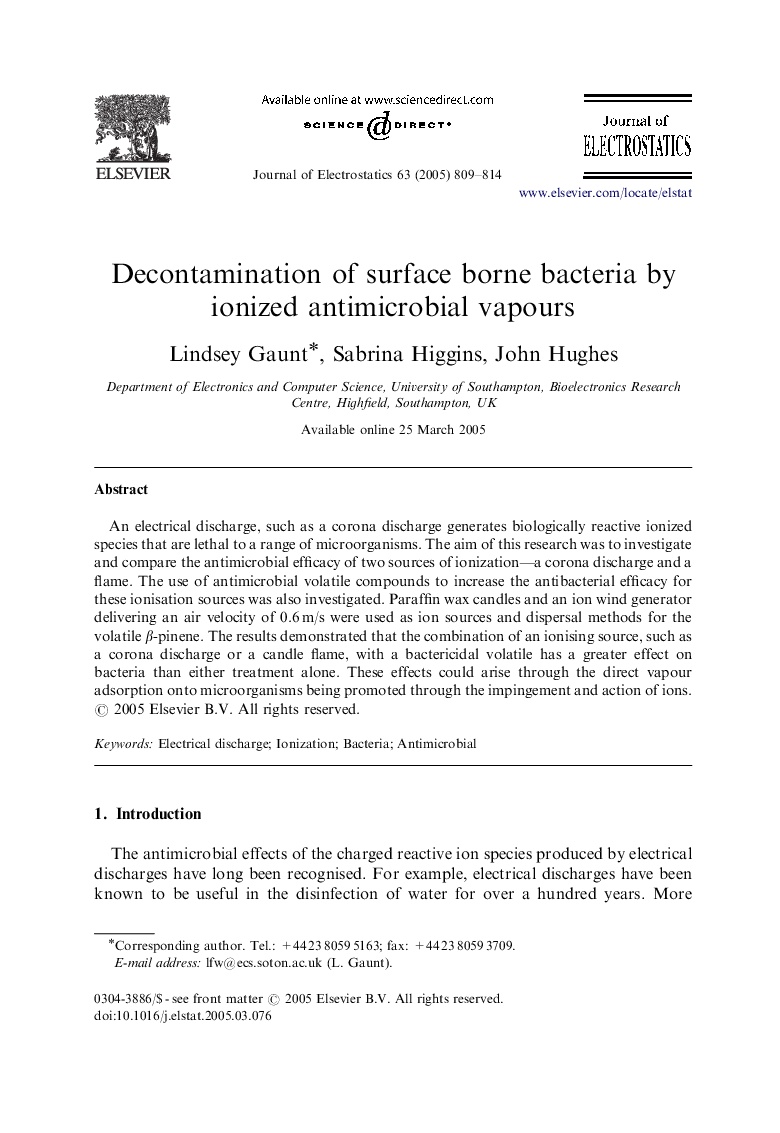| Article ID | Journal | Published Year | Pages | File Type |
|---|---|---|---|---|
| 9698810 | Journal of Electrostatics | 2005 | 6 Pages |
Abstract
An electrical discharge, such as a corona discharge generates biologically reactive ionized species that are lethal to a range of microorganisms. The aim of this research was to investigate and compare the antimicrobial efficacy of two sources of ionization-a corona discharge and a flame. The use of antimicrobial volatile compounds to increase the antibacterial efficacy for these ionisation sources was also investigated. Paraffin wax candles and an ion wind generator delivering an air velocity of 0.6 m/s were used as ion sources and dispersal methods for the volatile β-pinene. The results demonstrated that the combination of an ionising source, such as a corona discharge or a candle flame, with a bactericidal volatile has a greater effect on bacteria than either treatment alone. These effects could arise through the direct vapour adsorption onto microorganisms being promoted through the impingement and action of ions.
Related Topics
Physical Sciences and Engineering
Engineering
Electrical and Electronic Engineering
Authors
Lindsey Gaunt, Sabrina Higgins, John Hughes,
